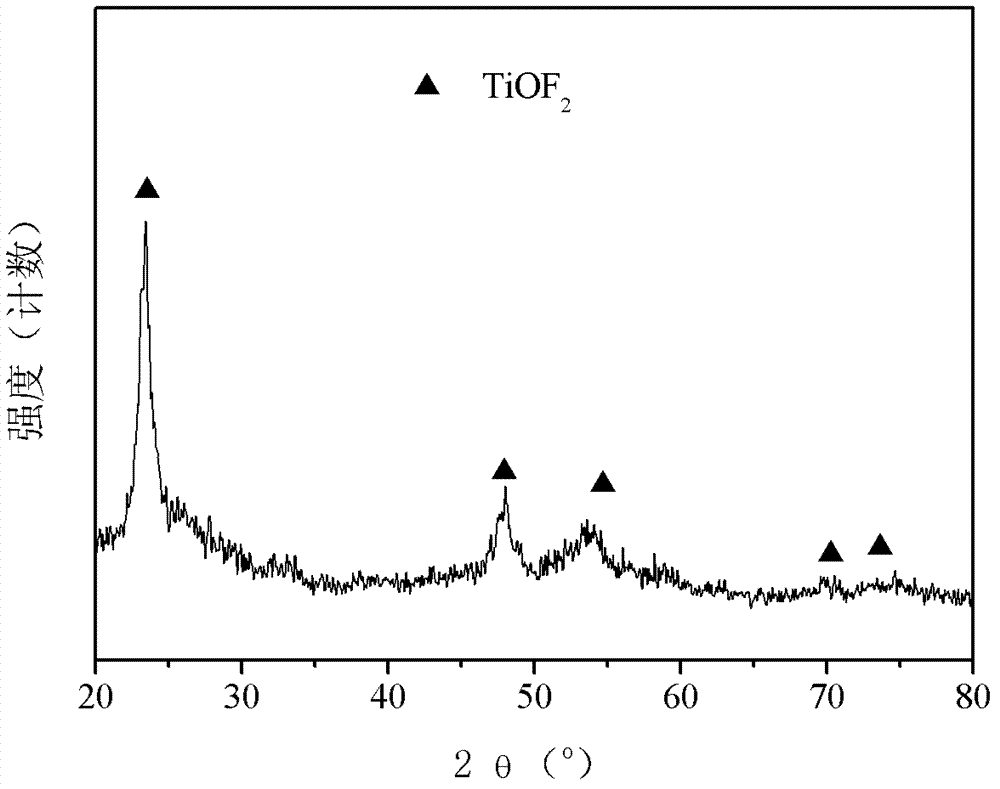Low temperature preparation method for TiOF2 photocatalyst film, and application thereof
A photocatalytic thin film, low temperature technology, applied in chemical instruments and methods, physical/chemical process catalysts, chemical/physical processes, etc., can solve the problems of difficulty in forming stable thin films on the surface of substrates, inconvenience in actual production and use, etc. The effect of strong interaction, good stability and wide application prospects
- Summary
- Abstract
- Description
- Claims
- Application Information
AI Technical Summary
Problems solved by technology
Method used
Image
Examples
Embodiment 1
[0018] Add 0.37 g of titanium tetrafluoride to 30 mL of absolute ethanol, and stir at 283 K for 2 h to obtain solution A. Immerse the glass substrate in solution A, then lift it up slowly, remove the excess bottom solution and transfer it to a 373K oven for aging for 8 hours to prepare the photocatalytic film Ti-0.1-100. The obtained photocatalytic film was directly applied to the photocatalytic degradation reaction of Rhodamine B.
Embodiment 2
[0020] Add 1.5 g of titanium tetrafluoride to 60 mL of anhydrous butanol, and stir at 298 K for 5 h to obtain solution A. Immerse the glass substrate in solution A, then lift it up slowly, remove the excess bottom solution and transfer it to a 373K oven for aging for 8 hours to prepare the photocatalytic film Ti-0.2-100. The obtained photocatalytic film was directly applied to the photocatalytic degradation reaction of Rhodamine B.
Embodiment 3
[0022] Add 1.12 g of titanium tetrafluoride to 30 mL of absolute ethanol, and stir at 323 K for 1 h to obtain solution A. Immerse the glass substrate in solution A, then lift it up slowly, remove the excess bottom solution and transfer it to a 373K oven for aging for 8 hours to prepare the photocatalytic film Ti-0.3-100. The obtained photocatalytic film was directly applied to the photocatalytic degradation reaction of Rhodamine B.
PUM
 Login to View More
Login to View More Abstract
Description
Claims
Application Information
 Login to View More
Login to View More - R&D
- Intellectual Property
- Life Sciences
- Materials
- Tech Scout
- Unparalleled Data Quality
- Higher Quality Content
- 60% Fewer Hallucinations
Browse by: Latest US Patents, China's latest patents, Technical Efficacy Thesaurus, Application Domain, Technology Topic, Popular Technical Reports.
© 2025 PatSnap. All rights reserved.Legal|Privacy policy|Modern Slavery Act Transparency Statement|Sitemap|About US| Contact US: help@patsnap.com



